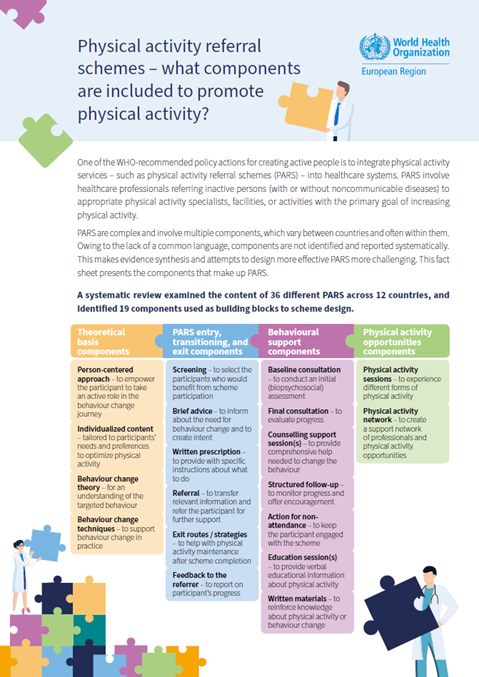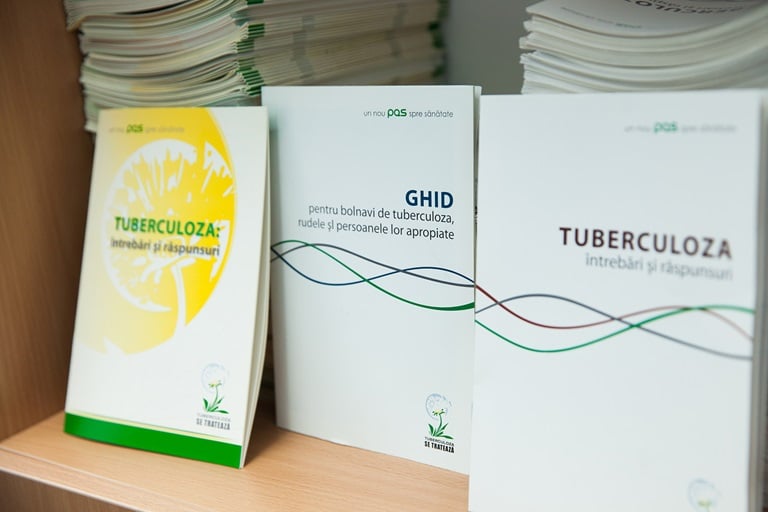Physical activity referral schemes – what components are included to promote physical activity?

Overview
One of the WHO-recommended policy actions for creating active people is to integrate physical activity services – such as physical activity referral schemes (PARS) – into healthcare systems. PARS involve healthcare professionals referring inactive persons (with or without noncommunicable diseases) to appropriate physical activity specialists, facilities, or activities with the primary goal of increasing physical activity.
PARS are complex and involve multiple components, which vary between countries and often within them. Owing to the lack of a common language, components are not identified and reported systematically. This makes evidence synthesis and attempts to design more effective PARS more challenging. This fact sheet presents the components that make up PARS.
A systematic review examined the content of 36 different PARS across 12 countries, and identified 19 components used as building blocks to scheme design.






